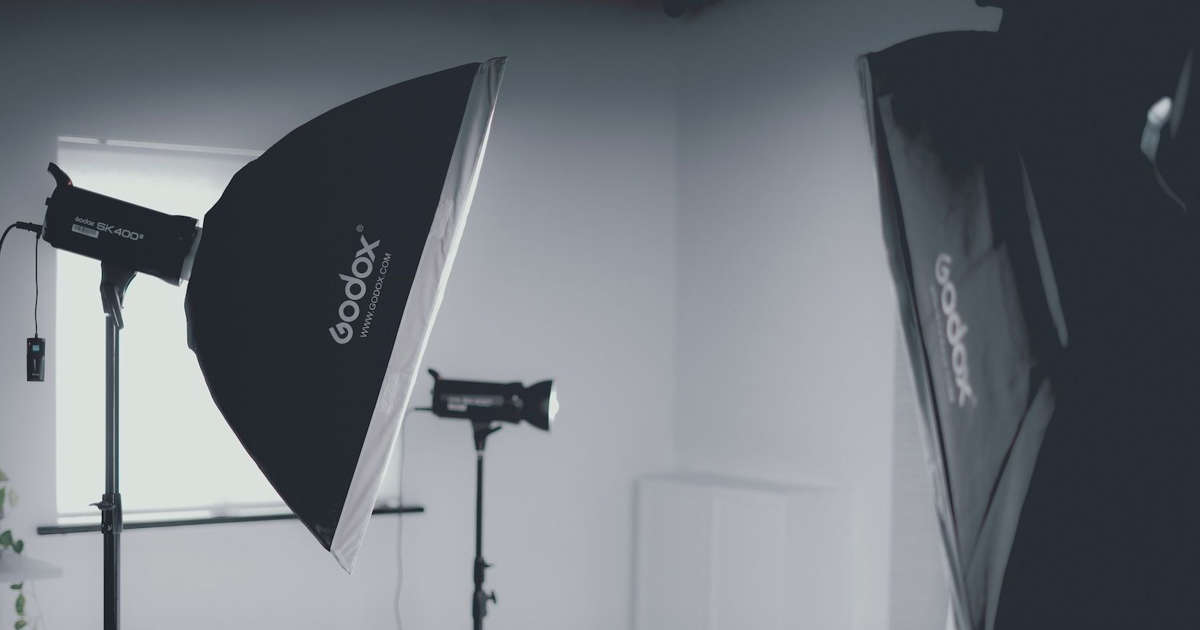[ad_1]
© Provided by MUO
Are you a photographer new to artificial lighting? Unlike shooting in natural light, you have a steep learning curve when transitioning to artificial light. But you have more control when you shoot with studio lights, and you have a plethora of options to light your scene creatively.
Whether you use natural or artificial light, diffusing it is crucial to get natural-looking photos. Let’s discuss how different softboxes impact lighting and how to choose the right one for your studio lighting needs.
What Is a Softbox?
A softbox is a lighting modifier made of white translucent material that will go over your light source. It reduces the light’s intensity and spreads it evenly over a larger area.
Usually, you can place the softbox over your light source attached to a light stand. If you’re new to flash photography, check out this beginner’s guide to studio lighting.
Softboxes come in different shapes, each creating a different look on your subjects. This makes them suitable for different types of subjects, so you need to be mindful of which one you get.
The Different Types of Softboxes
Let’s discuss the different types of softboxes and help you choose one based on your lighting needs, subject, and portability requirements.
Square and Rectangle
Unlike an umbrella you may have seen in studios, the square softbox is entirely closed, more suitable for directing the light toward the subject. In addition, it is easy to set up and mimics the soft natural light diffused through a window.
This popular shape can work for portraits, food, and product photography. Square softboxes come in different sizes and can fold into smaller sizes for easy carrying.
You can get away with using one light and a diffuser setup for food and portraits. However, you may want two lights if you’re doing serious product photography. If you’re new to studio lighting, starting with a square softbox is a good idea.
A rectangular softbox, also called a strip box, works similarly to a square one. You will ideally choose it for full-body images because of its length—square softboxes are more suited to headshots.
Octagonal
Referred to as octa softboxes, these are highly preferred for portraits. Unlike square softboxes, the light fall-off is even in octa softboxes because of the curved design.
They also mimic sunlight more, producing a beautiful round catchlight in the subject’s eyes. Octa boxes are fantastic for food and portrait photography.
Parabolic
As demonstrated with the Godox P120L Parabolic Softbox above, these softboxes look like octa boxes but have more sides and are deeper. As a result, they spread a narrower beam of light compared to octa boxes. They are also heavier and take time to set up.
You can also use the parabolic softbox with lights facing inside so that it can bounce off the reflective coating. This can create more contrast and give your images a different look. Parabolic softboxes can give you some flexibility when you want to try creative lighting for portraits.
Lantern
A lantern softbox looks like a giant light bulb and produces a huge spread of even light, as shown with the Aperture Lantern 90 above. This type is definitely flattering for portraits, but it can also be apt for interior and real estate photos.
Though the light from a lantern softbox is comparable to that of umbrella softboxes, lanterns give a directional and controllable light spill.
Other Things to Consider When Getting a Softbox
Apart from traditional softboxes, there are various accessories you can use to get different effects.
Grid
Also called honeycomb grids, these go over your softbox to avoid light spill and guide it to your subject. The resulting light from a grid is soft yet focussed. It is flattering for portraits and food photos.
Mounts and Brackets
Depending on the type of light and light stand you use, you have to find the right accessory to fit your softbox. For example, if your use a speedlight, you need an S-type bracket holder with a Bowens mount. Talk to your local camera store or do some research online to find out what exactly you need.
Small Softboxes
If you’re using a speedlight on your camera, it is still essential to use a lighting modifier on your flash to soften the light and make it look natural on your subject. The Fotodiox 8×12-inch Flash Softbox shown above is a good example of a small softbox.
You can also get rectangular, round, or octa softboxes that go on top of your flash. These are suitable for event photographers who want to do portraits quickly. It also works for small spaces where you can’t set up a large light stand.
A small softbox is one of the essential gear items you need for taking amazing macro photos if you’re using a speedlight for macro photography.
Use the Right Softbox to Elevate Your Subjects
A light modifier is a critical tool in deciding the look of your photos. There are many types in the market, and knowing the different types of softboxes can help you use the right one to elevate your images. This guide is a good starting point if you’re not sure what you need.
[ad_2]

